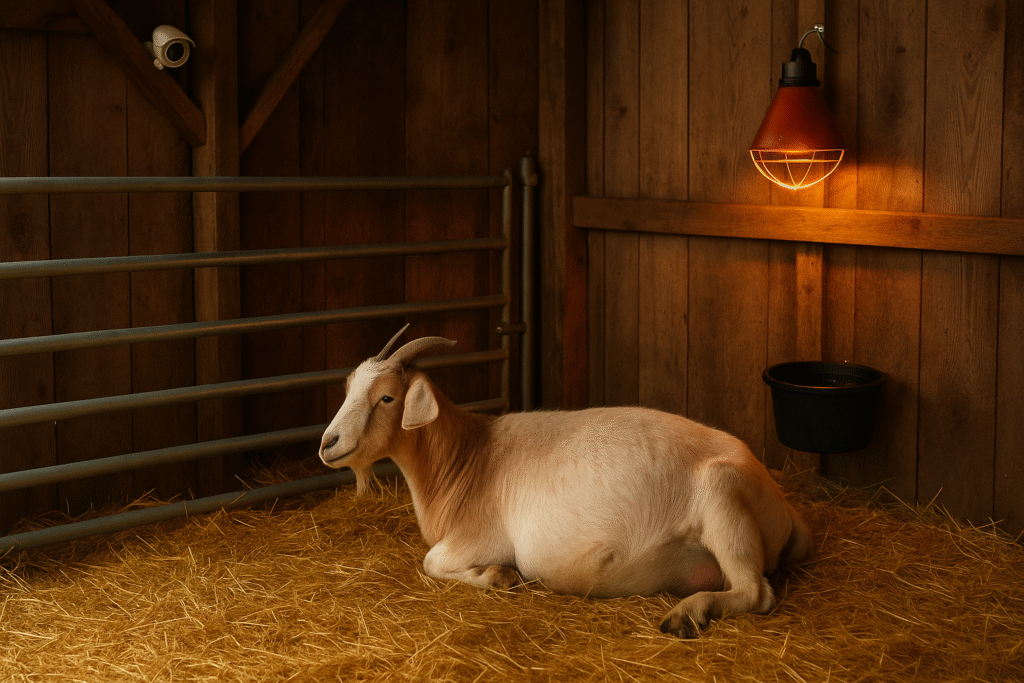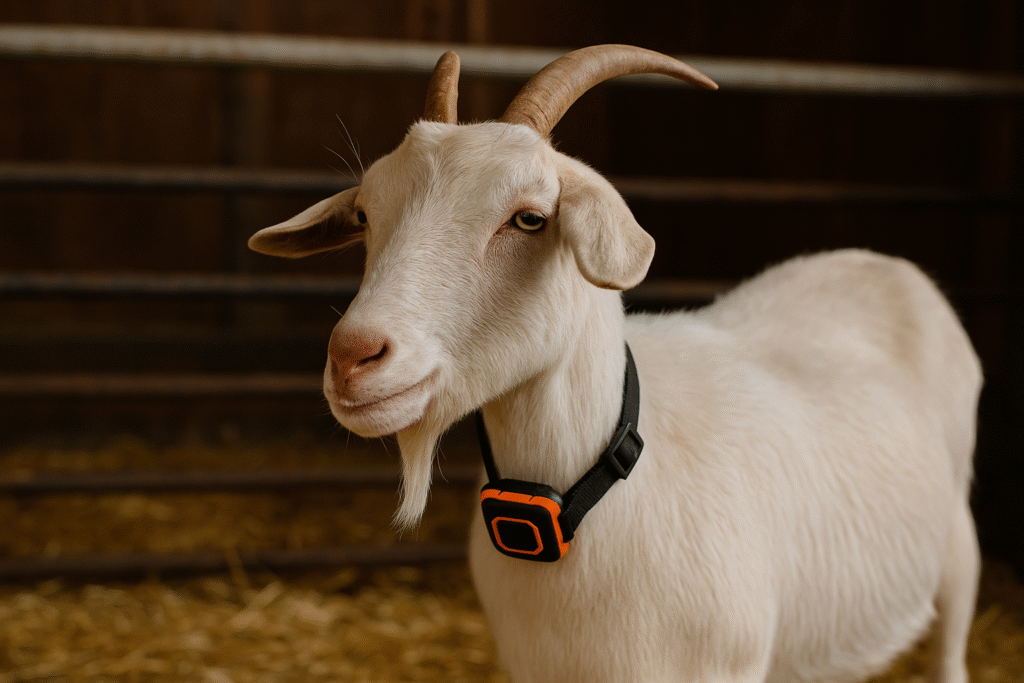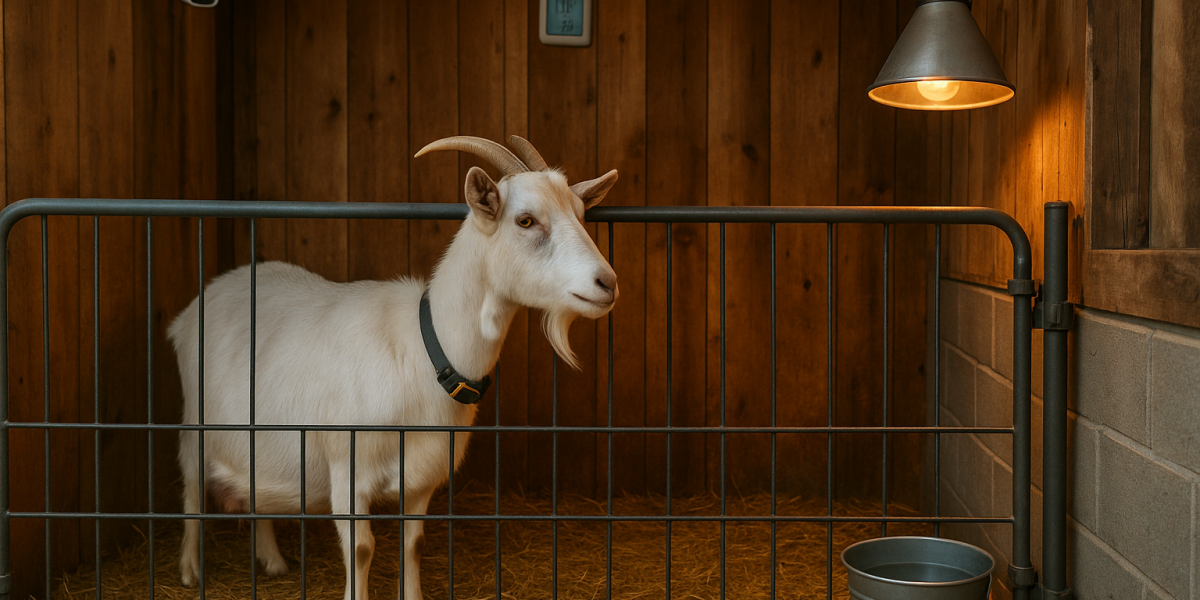Every time one of my does is expecting, it feels like waiting for family. There’s excitement, anticipation, and a little bit of worry mixed in. Understanding goat pregnancy has completely changed the way I care for my herd — it’s not just about counting days, but learning to read every shift in behavior, every physical sign, and now even every alert on my phone.
Over the years, I’ve learned to blend old-fashioned observation with modern farm tech. From watching for swollen vulvas and belly drops to logging temperatures with a digital thermometer or checking my goat app before bed, each season teaches me something new about what it means to prepare for new life in the barn.
Goat Birth
When goat birth finally arrives, it’s one of those moments that still makes my heart race. But a smooth birth doesn’t start in those final hours — it starts weeks earlier, with careful observation and preparation.
In my experience, the best thing you can do is know your doe. Each goat has her own rhythm and set of clues that tell you she’s close. Some become quieter and isolate themselves, while others talk to you constantly. The more you watch, the easier it becomes to tell when she’s in early labor and when things are about to happen.

Goat Giving Birth
Watching a goat giving birth is both humbling and intense. There’s usually a calm before the storm — a period where she breathes heavier, paws the bedding, and lies down, only to get right back up. That’s when I take a deep breath and make sure my kidding kit is ready.
When labor truly begins, the water bag appears, followed by tiny hooves and a nose. That’s always the moment I hold my breath. Once the first kid slides into the world, the rest usually follow more easily. A clean, dry space and a calm environment make all the difference for a successful kidding.
Goat Gestation
Goat gestation typically lasts 145 to 155 days — roughly five months. I mark the breeding date in my journal and app, and then count forward. Here’s how I generally break down those months:
- Month 1–2: Subtle changes — she might be quieter or hungrier, but you’ll barely notice.
- Month 3: Her belly starts to round.
- Month 4: The pregnancy becomes obvious. She might move slower or prefer softer bedding.
- Month 5: Everything changes — her body prepares for labor, her behavior shifts, and your watchfulness ramps up.
Knowing where you are in the gestation cycle helps you predict when to move her into her kidding stall and when to start taking temperature readings daily.
Pregnant Goat
A pregnant goat has special needs that go beyond feed and shelter. She needs consistency, calm, and space. I always give my expecting does a stress-free environment — no new herd introductions, no chasing, and no big changes to their feed schedule.
In the final month, I add a little more grain and fresh greens if available. She’s feeding both herself and her unborn kids, so energy and minerals are crucial. I check her daily for signs of swelling, udder changes, and general comfort.
Swollen Vulva
One of the first visible clues that kidding is getting close is a swollen vulva. It becomes looser, puffier, and sometimes shines a bit from moisture. This is completely normal — it’s the body’s way of softening the tissues in preparation for birth.
I check each doe in the evenings when the barn is quiet. Once I see swelling paired with discharge (usually clear or milky), I know labor is coming within the next day or two. It’s a subtle but reliable sign that the long wait is almost over.

Belly Drop
When the kids shift lower, the doe’s shape changes — her back end looks hollow, and her belly looks heavier and rounder toward the bottom. This is what goat owners call the belly drop.
When I see it, I start checking her temperature and ligaments twice daily. The ligaments near the tail will feel soft or even disappear as she nears labor. Once the belly drops and her ligaments are gone, you’re in the 24-hour zone.
Nesting Behavior
Nesting behavior is one of the sweetest parts of the process. My does will paw at the bedding, circle the pen, or even make a small “nest” where they plan to give birth. It’s instinctive and completely natural.
I always make sure the kidding stall is clean, dry, and bedded deeply with straw. I stay quiet and give her space — she knows what she’s doing. This is also when I double-check my supplies: clean towels, iodine, gloves, and my trusty digital thermometer.
Loss of Appetite
A sudden loss of appetite is often the final clue that labor is only hours away. When a doe that normally runs for her grain just sniffs it and walks away, I know it’s time to stay close.
It’s not that she’s sick — her body is simply shifting focus from digestion to delivery. I usually offer warm molasses water to keep her hydrated and energized. If she drinks, that’s a good sign; if not, I leave her be. Within hours, the first contractions usually begin.
Smart Farming
While I love the old-school observation method, smart farming has completely changed the game for me. Today, I can track signs, temperature, and even movement using a few simple tools connected to my phone.
My barn now includes cameras with motion detection, temperature sensors, and even collar trackers. It’s not about replacing the personal connection — it’s about expanding my awareness. I can be inside the house, and my phone buzzes to tell me that Doe #5 is showing restless activity or a temperature drop. That’s smart farming at its best — safety through awareness.
Digital Thermometer
The digital thermometer is my quiet companion during the final week of pregnancy. A doe’s temperature often drops by about one degree Fahrenheit (around 100°F or slightly below) about 12 to 24 hours before labor begins.
I keep a small notebook and jot the readings each evening. Some days, it stays steady — other days, the dip tells me everything. With Bluetooth thermometers, I can even log the data automatically to my phone and compare trends. It’s a small investment that gives a huge amount of peace of mind.
Goat App
I use a goat app to keep all my breeding and kidding data organized. It’s my second brain during kidding season. I log the breeding date, due date, temperature trends, and notes about behavior like nesting or loss of appetite.
Having everything recorded helps me recognize patterns — some does kid on day 147 every year, others on day 152. When you start tracking that kind of detail, you’re not guessing anymore — you’re farming smarter.
Goat Collar
One of my favorite modern tools is the goat collar with built-in sensors. These collars track temperature, movement, and even restlessness. When a doe starts pacing or her temperature drops, I get an alert right to my phone.
It might sound high-tech, but it’s a real safety net. I still rely on my eyes and hands, but having that extra layer of monitoring means I don’t miss those 3 a.m. births anymore.

Farm Tech
The beauty of today’s farm tech is how customizable it’s become for small farms like mine. You can set up cameras, sensors, and alert systems tailored to your herd size. Some systems even let you automate heat lamps, lights, or fans in your barn through your phone.
I’ve learned to trust a combination of both worlds — tech to alert me, and my own intuition to interpret what’s happening. Together, they create balance and peace of mind.
Goat Shelter
Your goat shelter becomes the heart of the entire pregnancy process. This is where your doe will nest, labor, and bond with her kids. I keep mine clean, quiet, and separate from the main herd.
My setup includes:
- Deep straw bedding for warmth
- A sturdy pen gate for privacy
- Fresh water within reach
- A small, safely mounted heat lamp
- Cameras that let me peek in without disturbing her
A well-prepared goat shelter isn’t fancy — it’s functional and safe. When I walk into the barn at night and see a calm doe settling into her straw, I know I’ve done my part.
Bringing It All Together
Every goat pregnancy feels a little different, but the process always carries the same magic. From the first signs of a swollen vulva to the quiet moment of nesting behavior, every stage tells a story. Some signs are as old as farming itself — others are brand new, born from smart farming innovation and digital tools.
My approach is simple: I watch, record, and care. I listen to my does, trust their instincts, and let farm tech help me where my human limits end.
Each season, I learn something new — and that’s the beauty of it. Goat pregnancy teaches patience, attentiveness, and awe. The tools might evolve, but the bond between farmer and animal remains timeless.
FAQs
Goat pregnancy typically lasts between 145 to 155 days, or about five months. Some breeds may give birth a few days earlier or later depending on genetics, nutrition, and health.
Early signs include subtle weight gain, a calmer demeanor, and changes in appetite. As weeks pass, you may notice a fuller belly and firmer udder development.
Look for a swollen vulva, belly drop, nesting behavior, and loss of appetite. You may also notice her tail ligaments soften and her udder tighten.
Feed high-quality hay, minerals, and clean water throughout gestation. In the last month, add small amounts of grain or alfalfa to support milk production and fetal growth.
Smart farming tools like goat collars, apps, and digital thermometers track movement, temperature, and behavior changes helping you predict labor and prevent complications.
Move her when you notice a belly drop, udder filling, or restlessness. A clean, dry, and draft-free goat shelter ensures comfort and safety for both the doe and her kids.
Keep a kidding kit ready — towels, iodine, gloves, a bulb syringe, and a heat source. Make sure the area is clean, quiet, and has easy access to water and light feed.













